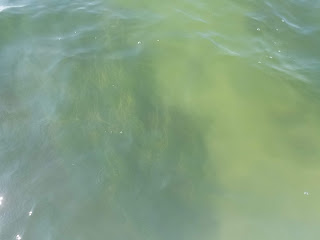SeagrassSoundings
A forum for the Massachusetts Seagrass Group
Welcome to SeagrassSoundings Blog
SeagrassSoundings focuses on the work that scientists and managers are doing to protect, preserve, study, restore and monitor seagrass in Massachusetts and throughout New England.
Friday, March 5, 2021
Thursday, March 4, 2021
Find out about the future of SeagrassNet and global seagrass monitoring with the Smithsonian
Come hear about the future of SeagrassNet!
Remember to register for the upcoming talk:
Dr. Lefcheck is currently the Tennenbaum Coordinating Scientist for the MarineGEO Network at the Smithsonian Institution and is based at the Smithsonian Environmental Research Center in Edgewater, MD, USA. He is a marine community ecologist and biodiversity scientist who has worked on a variety of coastal ecosystems from seagrasses, oyster and coral reefs to salt marshes, kelp forests, and deep-sea hydrothermal vents. He also develops novel statistical tools to help understand natural systems, particularly the growing technique of “structural equation modeling.” His current focus is on coordinating global seagrass monitoring and synthesis through MarineGEO and SeagrassNet – two efforts you will hear about during the seminar.
The seminar will take place on 31 March 2021 from 12:00 – 1:00 PM Eastern Standard Time (US and Canada).
To register, visit the ISBW14 website Pre-event Seminar Series page at https://isbw14.org/pre-event-seminar-series/
Following registration, a Zoom webinar link, meeting ID, and password will be sent to your email.
Tuesday, January 7, 2020
Check out this new article on our local efforts to restore eelgrass!
DURHAM, NH. (AP) - Peering over the side of his skiff anchored in the middle of New Hampshire's Great Bay, Fred Short liked what he saw.
Read the whole article here:
Scientists Struggle to Save Eelgrass from Coastal Pollution, December 23, 2019 AP news.com
Friday, August 30, 2019
BioSonics vs Divers -- a method comparison
published online yesterday in Estuaries and Coasts.
The full-text view-only version is here.
Here's the abstract:
Measured decreases in the spatial extent of seagrasses in Massachusetts are attributed to declining water quality, disease, or direct and indirect impact from dredging or construction. Routine aerial monitoring of seagrasses along the 2400-km coastline is costly and therefore limited both temporally and spatially. Diver surveys are used at two sites for in situ assessments of seagrass meadow structure. In order to examine spatial and temporal trends in seagrass extent and structure, a survey methodology that is less expensive and better at capturing structural characteristics than aerial photography and more efficient than divers is needed. Hydroacoustic methods are relatively inexpensive and rapidly deployed and can measure characteristics including canopy height and percent cover of eelgrass meadows. We tested the capabilities and limitations of a BioSonics DT-X echosounder using the EcoSAV algorithm to measure presence/absence, canopy height, and percent cover of eelgrass. Measurements were found to be reproducible on duplicate transects but had low precision: 36 cm for canopy height and 34% for percent cover. To assess accuracy, we compared EcoSAV estimates of canopy height and percent cover with diver measurements. The EcoSAV estimates of canopy height and percent cover were significantly higher than diver measurements by 60 cm and 46%. We conclude that the BioSonics with EcoSAV processing is an efficient tool to map eelgrass meadows and assess relative change over time, but because of differences in the way the echosounder measurements are made compared with diver measurements, echosounder data should not be used to directly compare with diver data or for surveys that require high accuracy and precision.
Wednesday, June 12, 2019
Tuesday, August 28, 2018
DKP seagrass monitoring pictures
 |
| Kristen with the camera frame used to take pictures of a 1/4 m2 area at set locations throughout the bay |
 |
| Tay measuring an eelgrass sample from NW Duxbury |
 |
| Measuring an eelgrass sample from NW Duxbury |
 |
| Another eelgrass sample from NW Duxbury |
 |
| Eelgrass leaf with low wasting disease and low epiphytes |
 |
| Patchy eelgrass in PKD |




